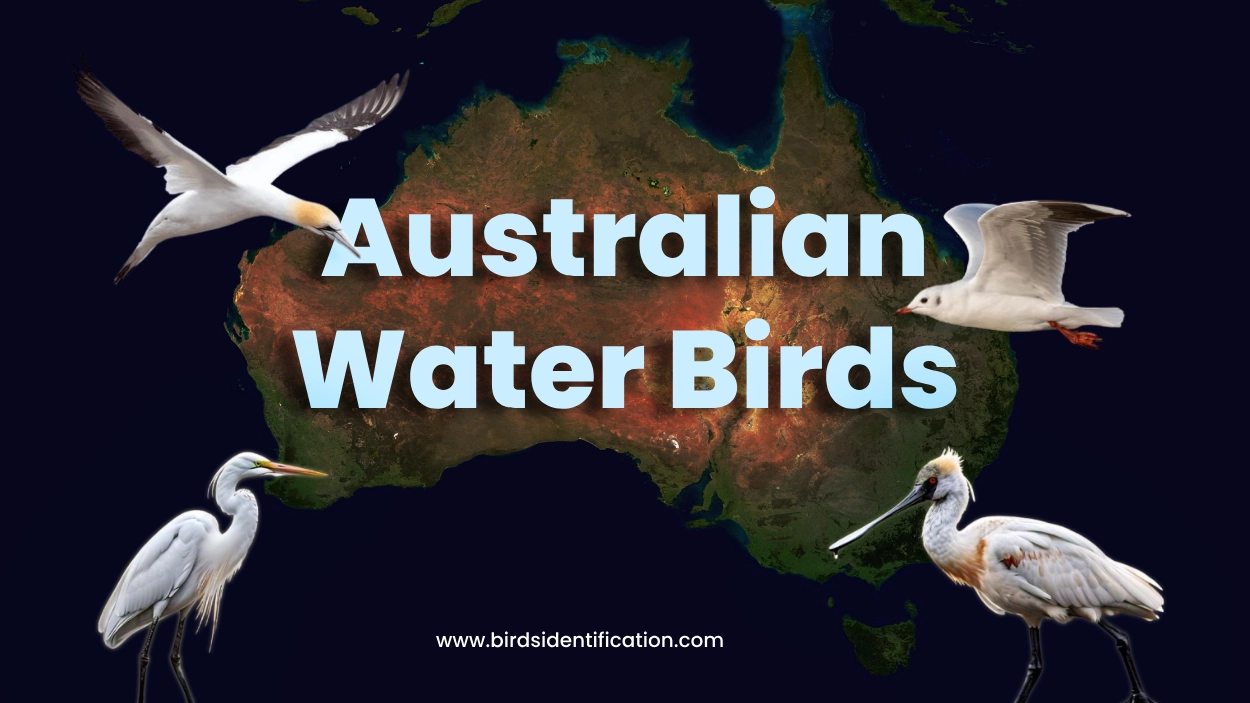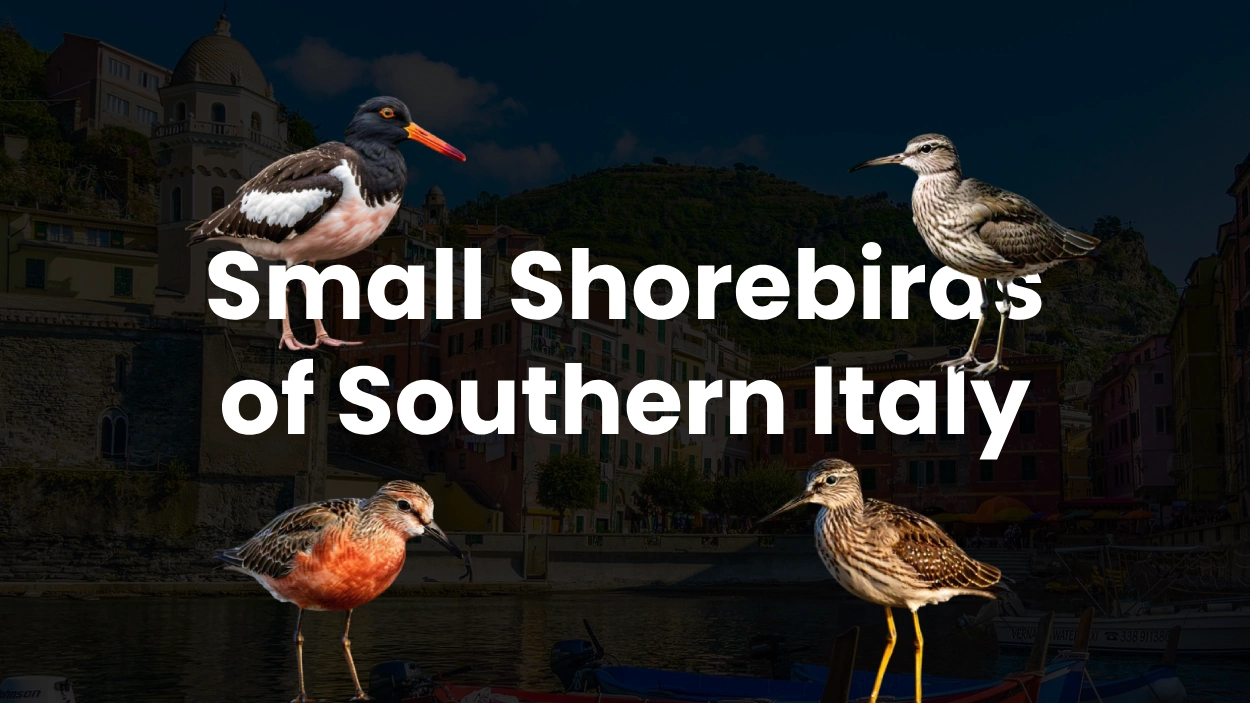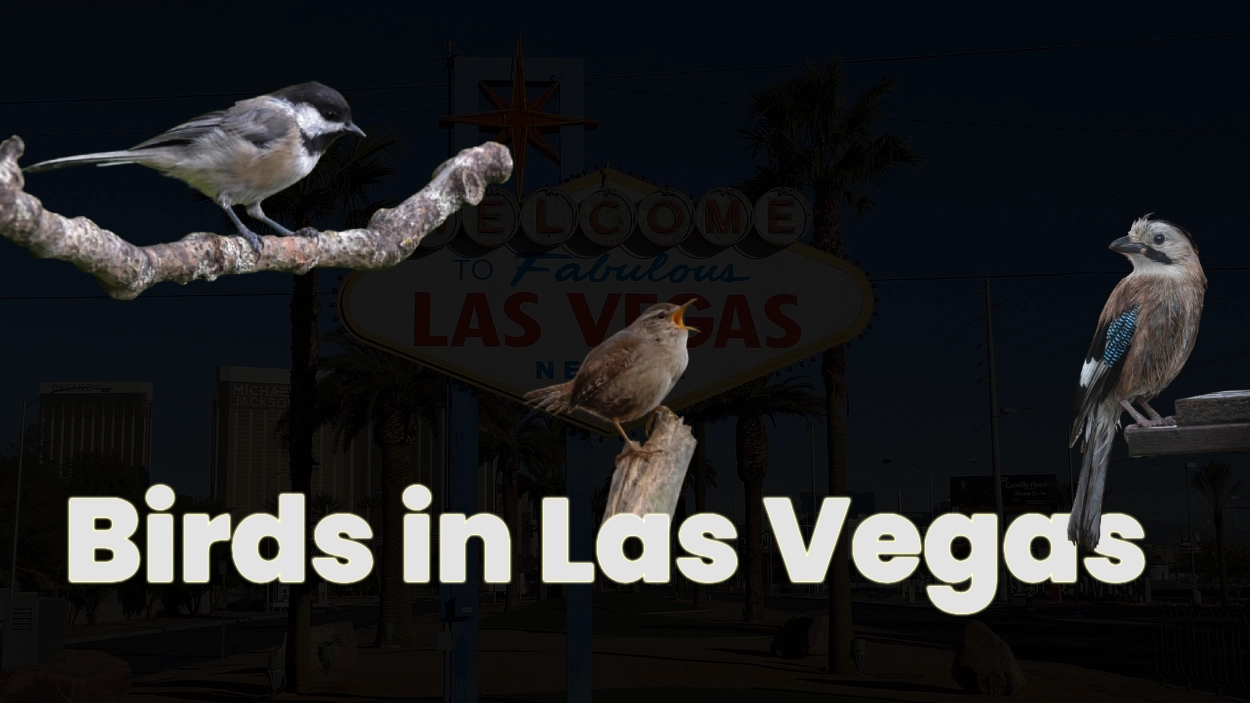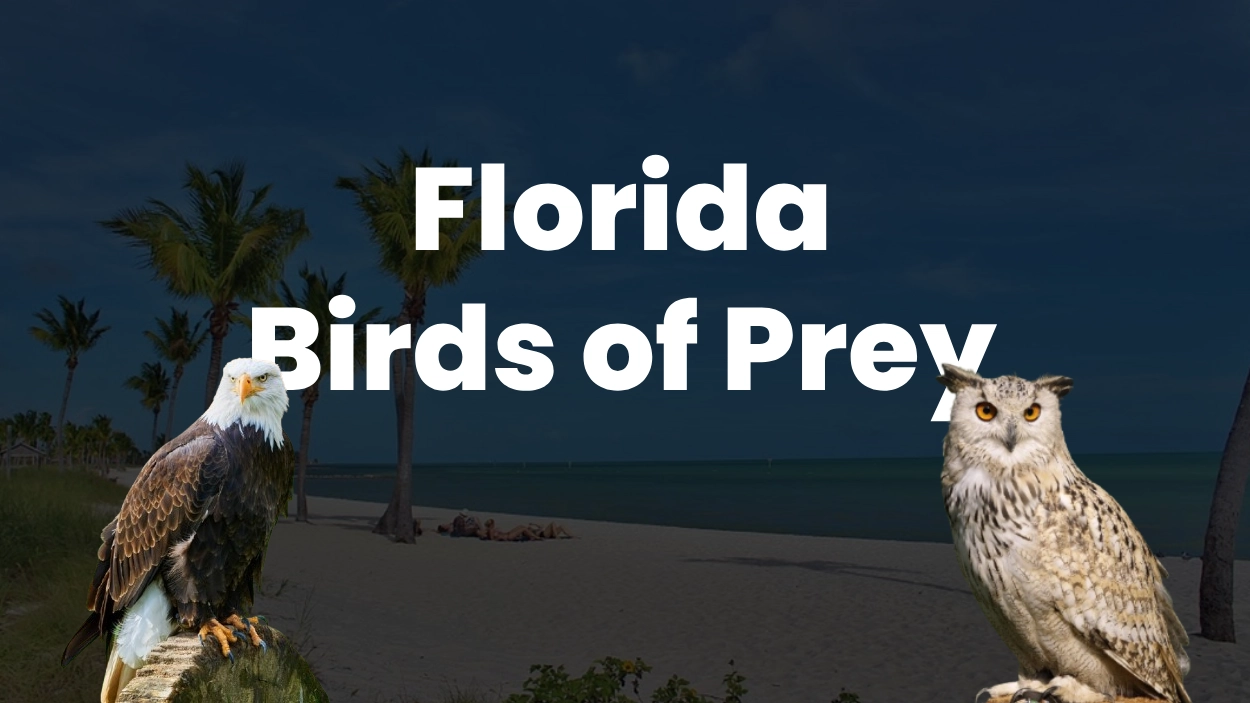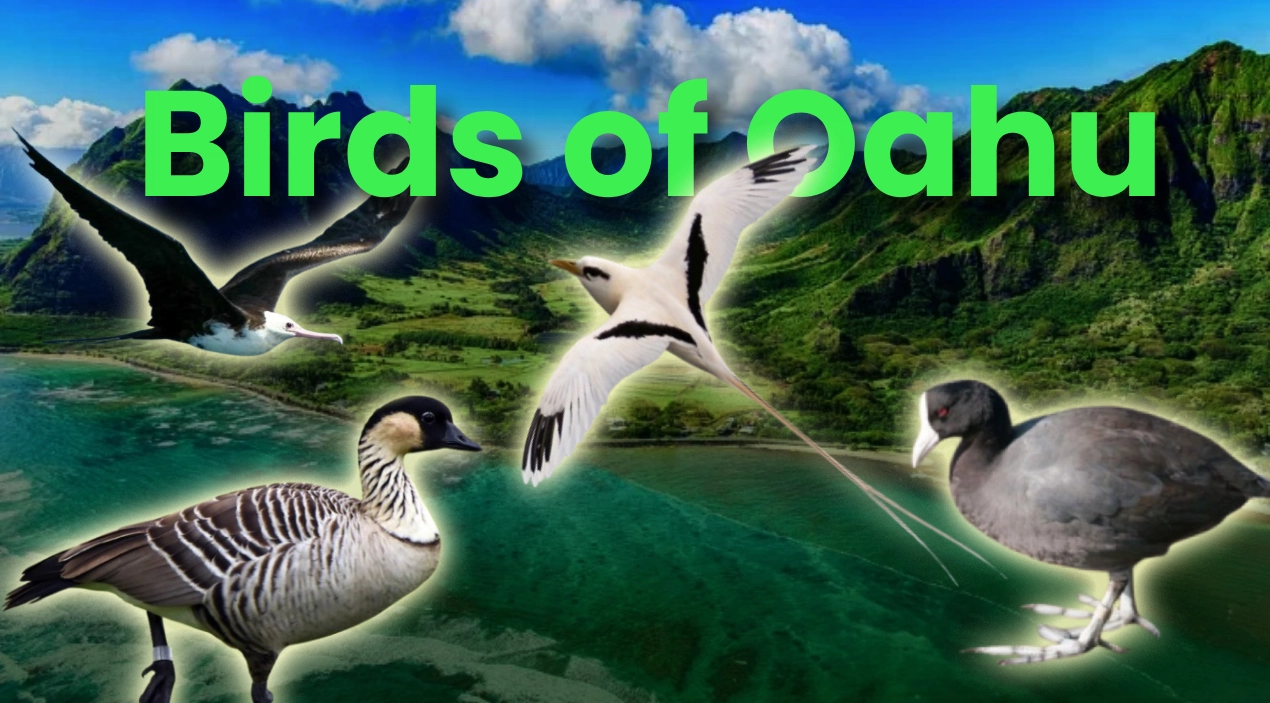From arid deserts to motley rainforests, Australia boasts a great diversity of environments with many pleasant surprises. Within the patently varied wildlife of Australia, water birds stand out for their grace and above all for their sheer ease of adaptability. Waterbirds live mainly along lakes, rivers, wetlands, and coastal areas, cumulatively presenting an important segment of water ecosystem dynamics. By preying on insects, fish, and plants, they play a significant role in population control and recycling nutrients.
In this post, we will look at the exciting world of 19 different species of Australian water birds and their behavior, habitat, and unique characteristics. But first, let us have a very quick look at the water habitats depending on the bird species.
Water Ecosystems in Australia
Australia’s water environments are as diverse as a beautiful landscape. Water birds inhabit several different types of ecosystems, including wetlands, lakes, rivers, and coastlines. Let us explore the major waterways and their habitats in Australia.
Wetlands
Wetlands may be one of the most vital ecosystems for Australian waterbirds. These areas come as freshwater or saltwater and abound with plant life and insects that provide food and shelter in plenty. Wetlands including Kakadu National Park wetlands in the Northern Territory or Gippsland Lakes in Victoria are seasonal bird paradises for many species, including migratory species. They act as breeding grounds and feeding sites that can support life year-round.
Rivers and Lakes
Rivers and lakes are important water places for Australia but most vital during the period of floods, such as the Murray-Darling Basin, which offers such feeding and nesting opportunities to the water bird species. Besides this, there are ephemeral lakes whose water holds during the rainy seasons provide a temporary but very influential habitat for breeding water birds.
Coastal Regions
Coastal regions are of equal importance for important marine and coastal species. Inland wetlands, Great Barrier Reef, and coastal wetlands provide an ample food source, including fish and crustaceans. A variety of species forage in these areas, the Silver Gull being one example.
Environmental Challenges
Major environmental problems presently confronting Australia’s water environments include drought, human development, and climate change. Waterbirds, in turn, are suffering from degradation and loss of habitats, altered migration routes, and difficulties with foraging. Conservation is important to establish ecologies for future generations.
Exploring Australian Water Birds Identification
1) Australian Wood Duck
A medium-sized duck with a distinctive dark head and mottled grey-brown body. Often seen grazing on grasslands near freshwater.
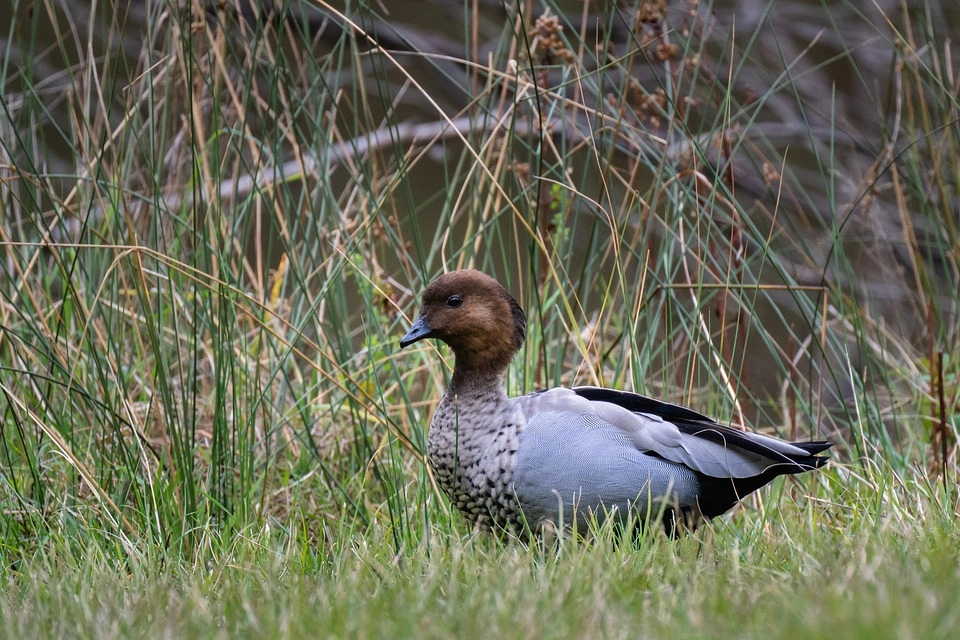
- Scientific Name: Chenonetta jubata
- Habitat: Found across Australia in wetlands, ponds, and rivers.
- Behavior: Often seen grazing on grass near water; they are monogamous and form strong pair bonds.
- Physical Characteristics: Medium-sized, with a pale head and dark eye markings. Males and females are similar in color.
- Wingspan: Around 75-90 cm.
- Length: 45-50 cm.
- Mass: 0.7-1.0 kg.
- Reproduction: Nests in tree hollows; lays 8-12 creamy white eggs.
- Diet: Primarily herbivorous, feeding on grasses and grains.
- Lifespan: Up to 12 years.
2) Black Swan
A large waterbird with entirely black plumage except for white flight feathers. Known for its graceful swimming and curved neck.
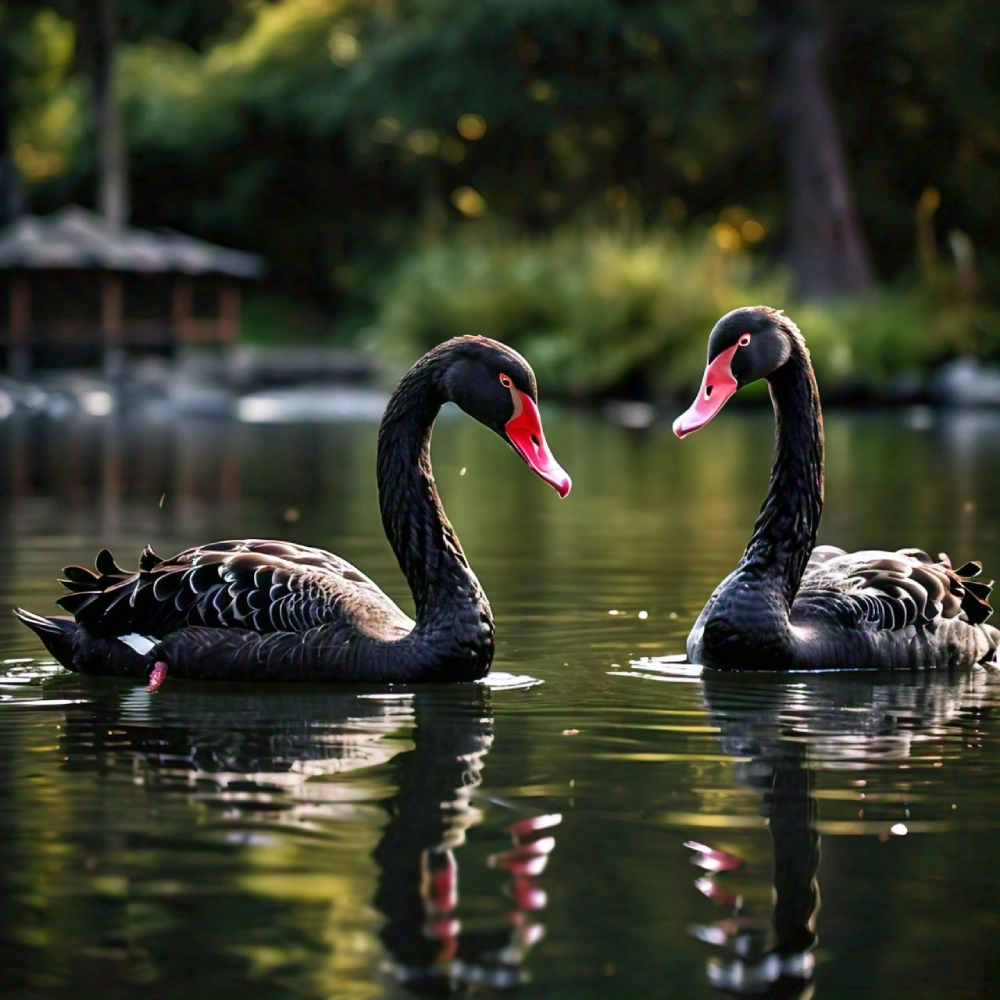
- Scientific Name: Cygnus atratus
- Habitat: Prefers lakes, rivers, and swamps; often found near large bodies of water.
- Behavior: Graceful swimmers and strong fliers, they are known for their iconic black plumage and red beak.
- Physical Characteristics: Large bird, entirely black with a bright red beak and white wing tips.
- Wingspan: 1.6-2 meters.
- Length: 110-140 cm.
- Mass: 5-6 kg.
- Reproduction: Nests in mounds of vegetation; lays 4-6 greenish-white eggs.
- Diet: Aquatic plants and algae.
- Lifespan: Can live up to 40 years in the wild.
3) Pacific Black Duck
A common duck with dark, mottled plumage and distinctive facial stripes. Often found in freshwater wetlands and ponds.
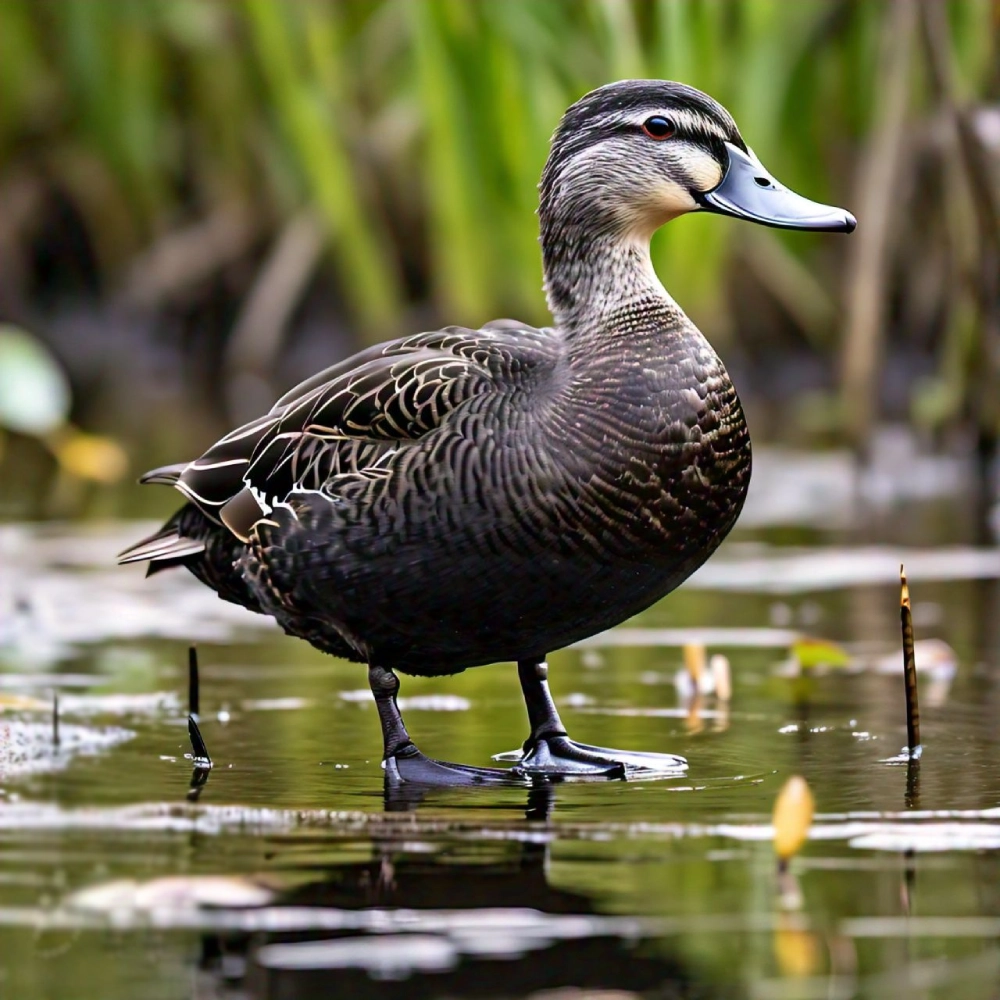
- Scientific Name: Anas superciliosa
- Habitat: Found in freshwater lakes, ponds, and rivers across Australia.
- Behavior: Prefers shallow waters for dabbling; they are social birds, often seen in pairs or small groups.
- Physical Characteristics: Dark brown with distinctive black and white markings on the face.
- Wingspan: 90 cm.
- Length: 50-60 cm.
- Mass: 0.8-1.2 kg.
- Reproduction: Nests in dense vegetation; lays 8-12 cream-colored eggs.
- Diet: Aquatic plants, insects, and small fish.
- Lifespan: 10-15 years.
4) Australian Shelduck
Large and colorful duck with a dark green head, chestnut breast, and white neck ring. Prefers open lakes and estuaries.
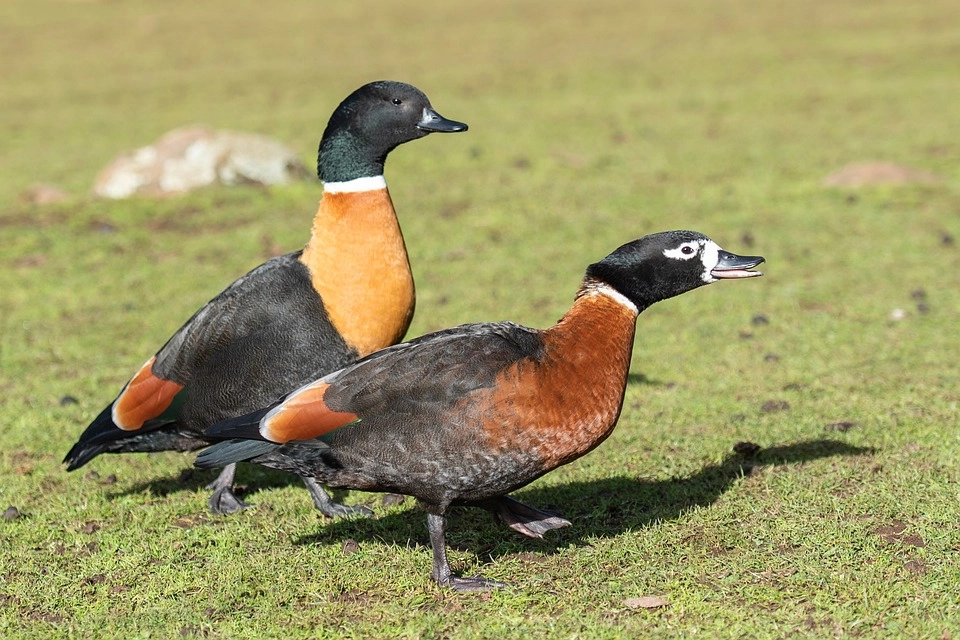
- Scientific Name: Tadorna tadornoides
- Habitat: Prefers open wetlands and lakes, often seen grazing near water.
- Behavior: A striking bird with a distinctive high-pitched call, known for long migrations.
- Physical Characteristics: Chestnut body, black head, and white neck ring.
- Wingspan: Around 110 cm.
- Length: 60-70 cm.
- Mass: 1.5-2.5 kg.
- Reproduction: Nests in tree hollows or burrows; lays 8-10 white eggs.
- Diet: Aquatic plants and insects.
- Lifespan: Up to 15 years.
5) Great Cormorant
A large black waterbird with a yellow throat patch. Excellent diver, often seen drying its wings after fishing.
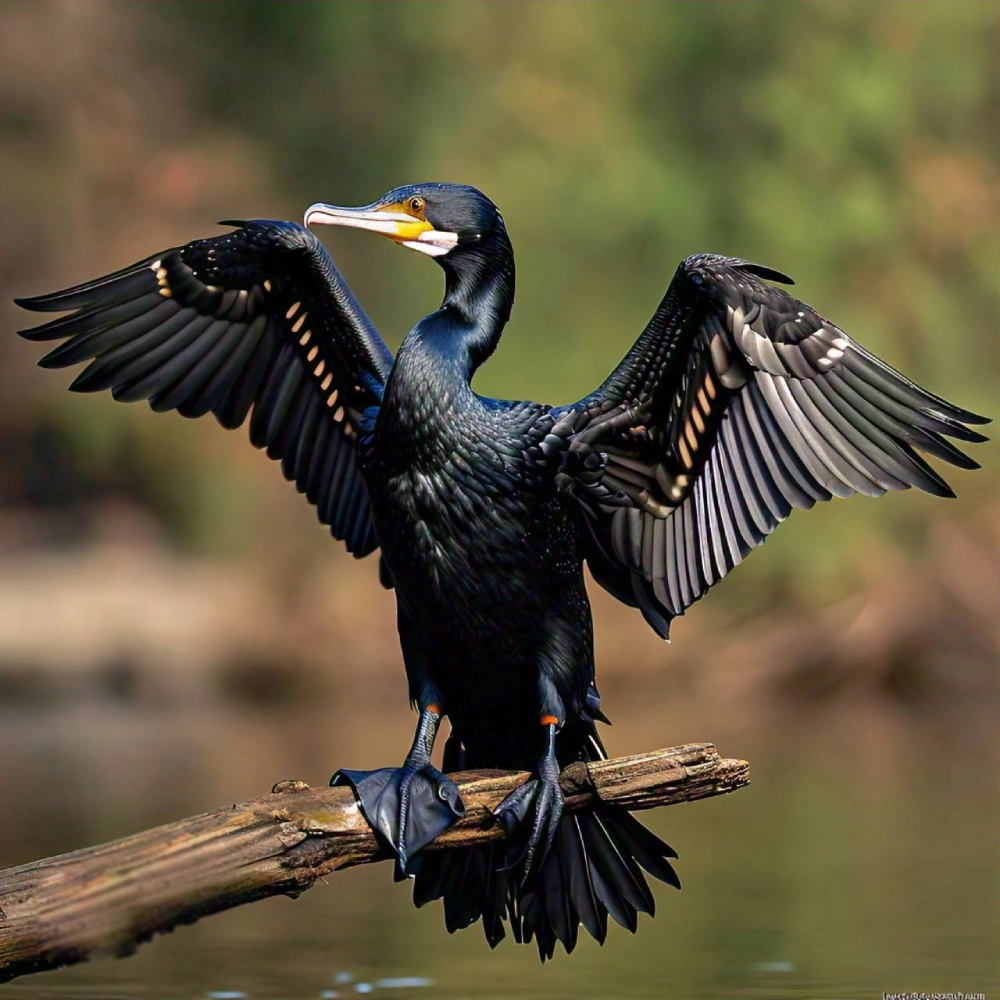
- Scientific Name: Phalacrocorax carbo
- Habitat: Found along coastlines, rivers, and lakes.
- Behavior: Excellent divers, often seen drying their wings in the sun.
- Physical Characteristics: Large bird, black plumage with a long neck and hooked beak.
- Wingspan: 120-160 cm.
- Length: 70-90 cm.
- Mass: 1.5-2.5 kg.
- Reproduction: Nests in colonies on cliffs or trees; lays 3-4 bluish eggs.
- Diet: Fish and small aquatic creatures.
- Lifespan: 20 years.
6) Cape Barren Goose
A robust, pale grey goose with black spots and a short, stout bill. Found in coastal areas and grasslands.
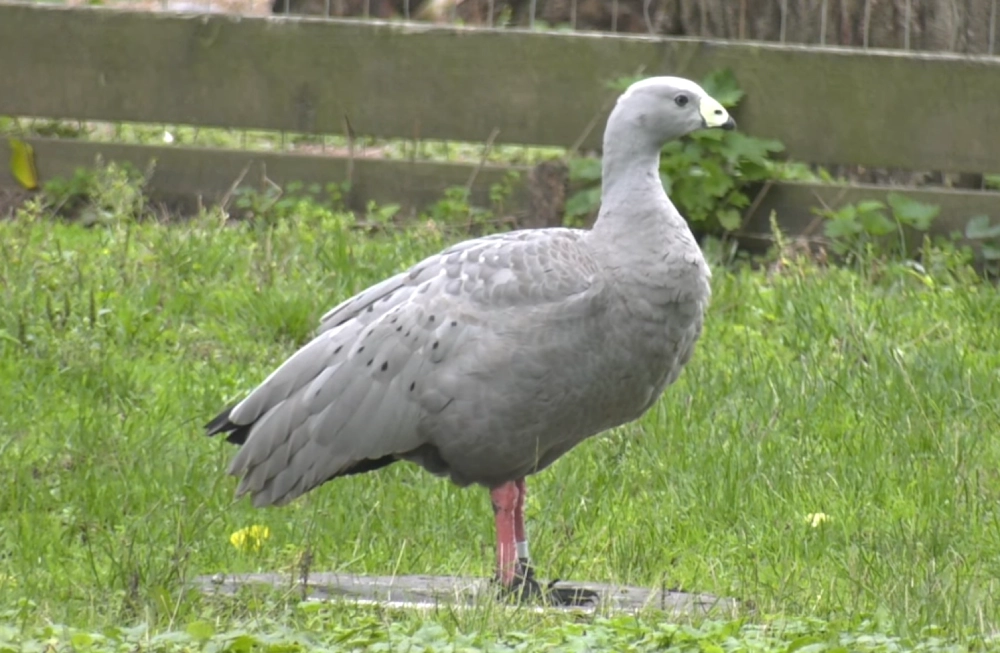
- Scientific Name: Cereopsis novaehollandiae
- Habitat: Found on coastal islands and near inland lakes.
- Behavior: Ground-dwelling birds that graze on grasses and herbs; highly territorial.
- Physical Characteristics: Pale grey body, black legs, and bright green beak.
- Wingspan: 150-180 cm.
- Length: 75-100 cm.
- Mass: 3-6 kg.
- Reproduction: Nests on the ground; lays 4-6 white eggs.
- Diet: Grasses, herbs, and occasionally aquatic plants.
- Lifespan: Up to 25 years.
7) Chestnut Teal
A small dabbling duck with rich chestnut-colored males and brown females. Prefers coastal lagoons and wetlands.
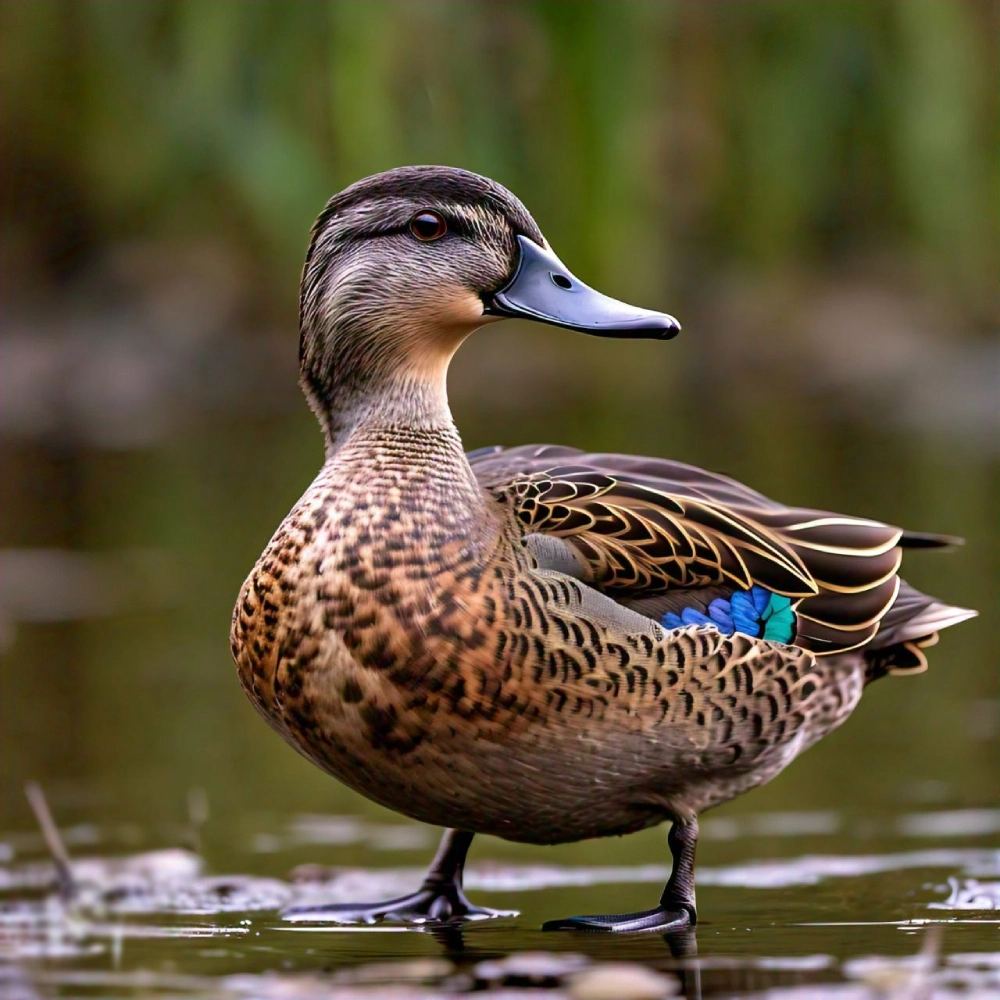
- Scientific Name: Anas castanea
- Habitat: Found in coastal lagoons and estuaries, as well as inland wetlands.
- Behavior: Dabbling duck, often seen in pairs or small flocks.
- Physical Characteristics: Males have a chestnut-colored body and green head, while females are brown.
- Wingspan: 80-90 cm.
- Length: 40-50 cm.
- Mass: 0.5-0.9 kg.
- Reproduction: Nests in dense vegetation; lays 7-9 cream-colored eggs.
- Diet: Aquatic plants and insects.
- Lifespan: 10-12 years.
8) Silver Gull
A common white gull with a red beak and legs, known for scavenging along coastlines and urban areas.
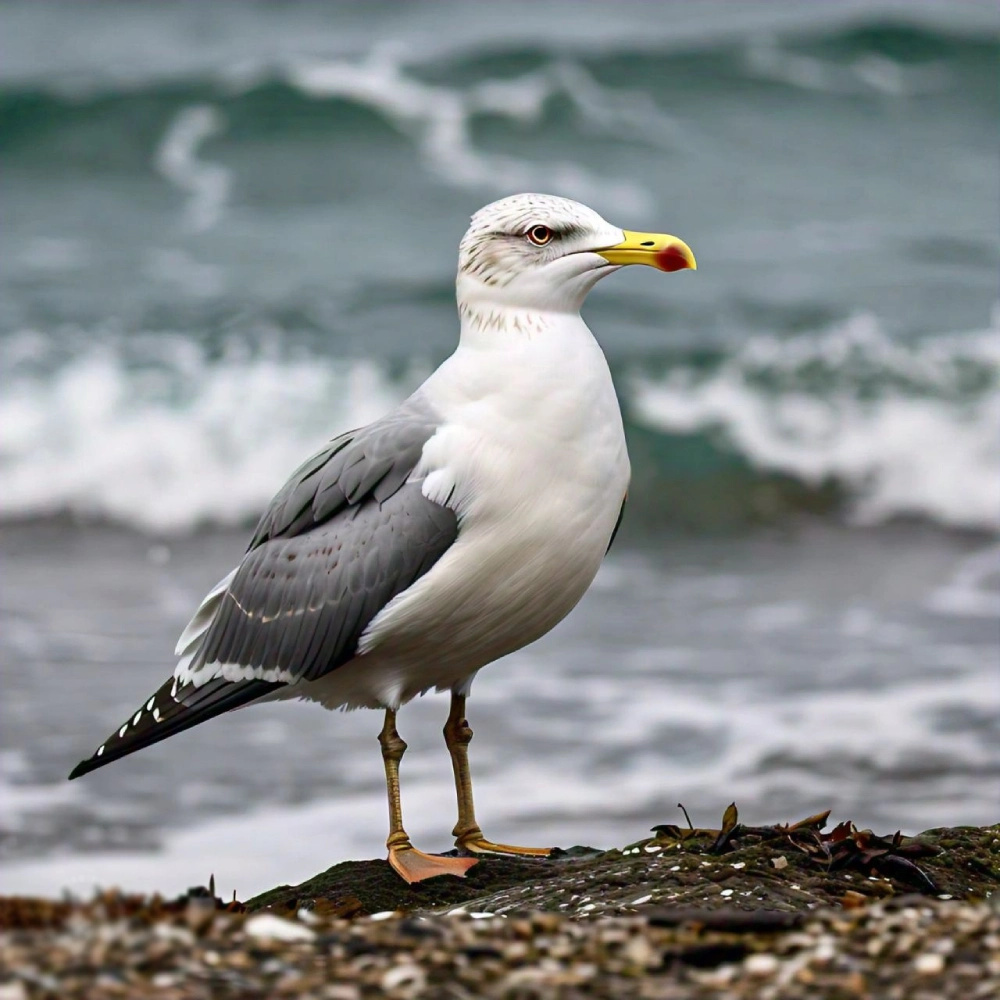
- Scientific Name: Chroicocephalus novaehollandiae
- Habitat: Common along coastlines, estuaries, and lakes.
- Behavior: Opportunistic feeders, often seen scavenging near human settlements.
- Physical Characteristics: White body with grey wings and bright red legs and beak.
- Wingspan: 90-100 cm.
- Length: 40-45 cm.
- Mass: 0.25-0.35 kg.
- Reproduction: Nests in colonies; lays 2-3 mottled eggs.
- Diet: Fish, insects, and human food scraps.
- Lifespan: 15-20 years.
9) White-faced Heron
A slender, grey-blue heron with a distinctive white face. Frequently seen wading in shallow water hunting for fish.
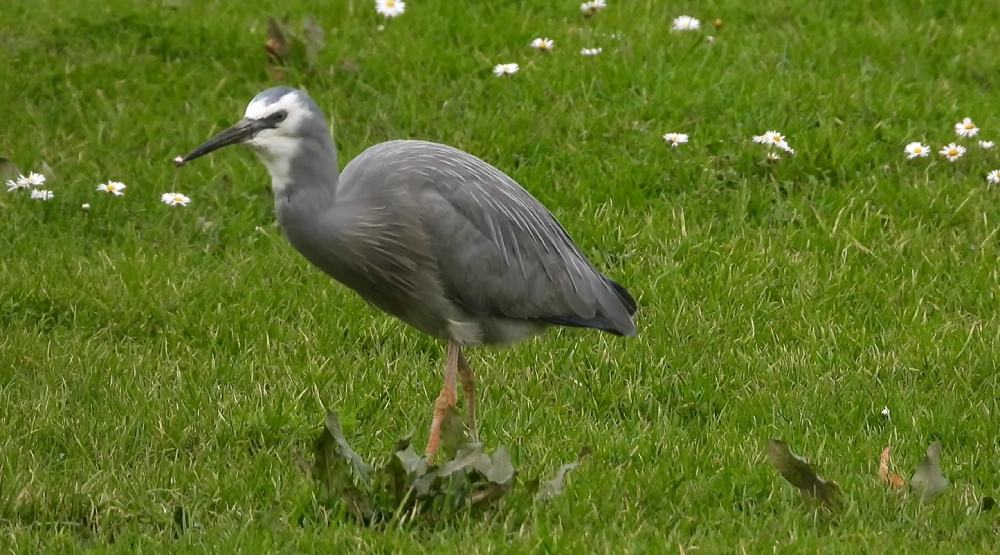
- Scientific Name: Egretta novaehollandiae
- Habitat: Found in wetlands, estuaries, and mudflats.
- Behavior: Solitary hunters, often seen wading in shallow waters in search of fish and insects.
- Physical Characteristics: Pale grey body with a distinctive white face and long legs.
- Wingspan: 100-120 cm.
- Length: 65-70 cm.
- Mass: 0.5-0.8 kg.
- Reproduction: Nests in trees or bushes; lays 3-4 bluish eggs.
- Diet: Fish, insects, and small amphibians.
- Lifespan: Up to 15 years.
10) Australasian Bittern
A large, elusive wetland bird with brown, streaked plumage. Known for its deep booming call in dense reeds.
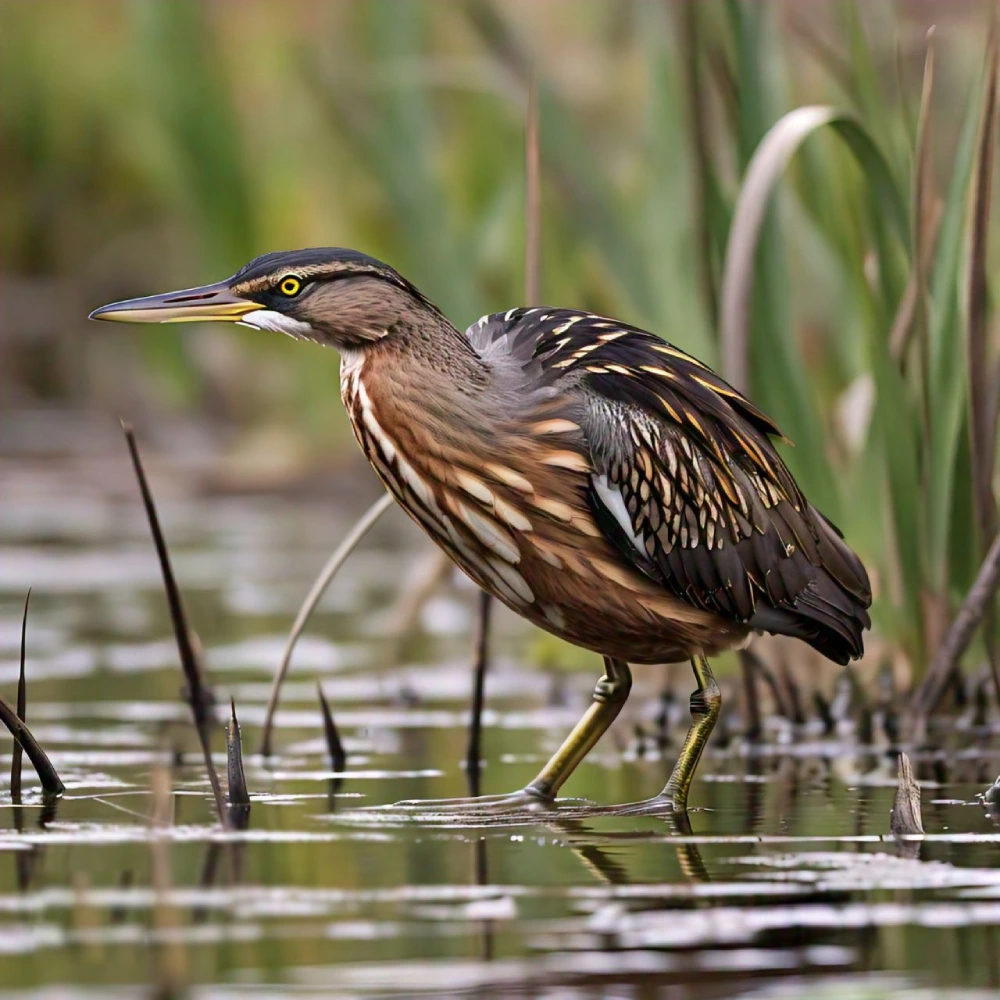
- Scientific Name: Botaurus poiciloptilus
- Habitat: Prefers dense wetlands with tall reeds.
- Behavior: Shy and elusive, often hiding among vegetation.
- Physical Characteristics: Brown streaked plumage helps it blend into reeds.
- Wingspan: 110-120 cm.
- Length: 70-80 cm.
- Mass: 1.5-2 kg.
- Reproduction: Nests in dense reeds; lays 3-5 pale green eggs.
- Diet: Fish, frogs, and insects.
- Lifespan: 10-12 years.
11) Australian Shoveler
A small duck with a distinctive large, spoon-shaped bill. Males have blue-grey wings and a white crescent on the face.
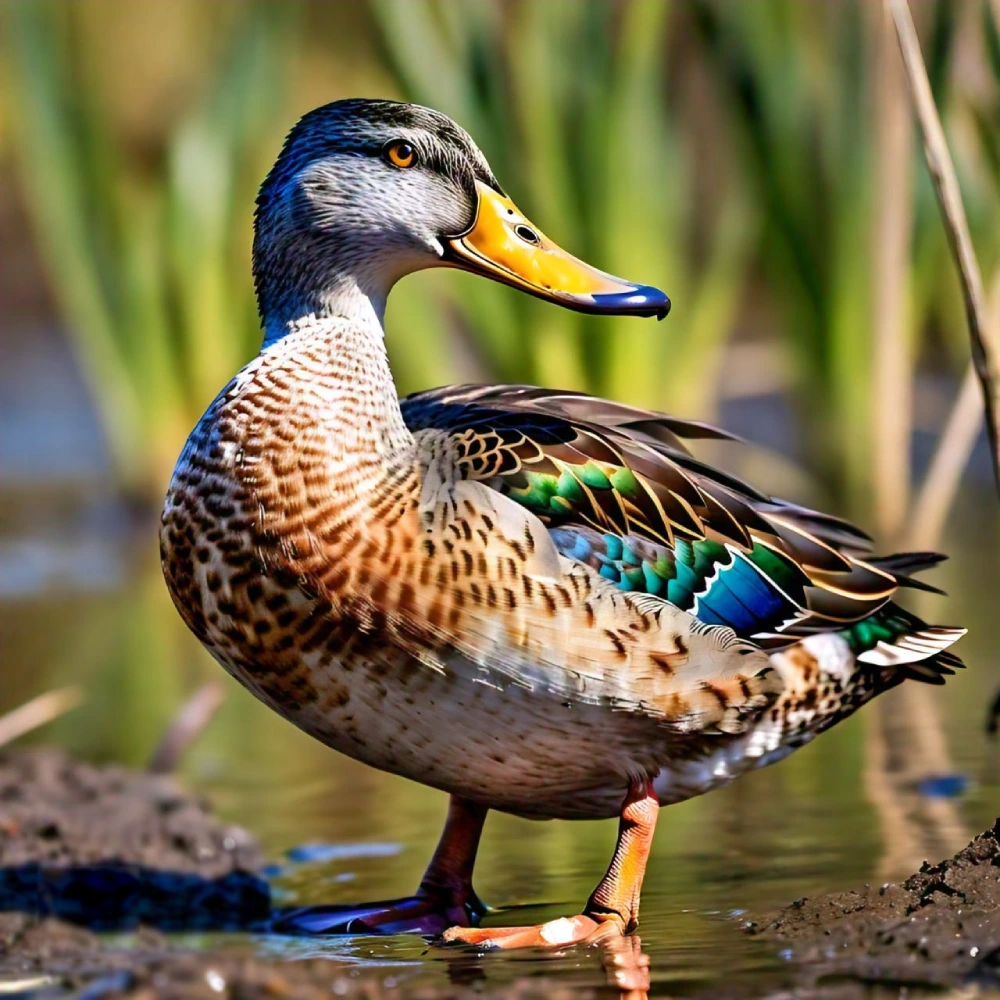
- Scientific Name: Spatula rhynchotis
- Habitat: Prefers freshwater wetlands, lakes, and swamps.
- Behavior: Often seen dabbling in shallow water; uses its broad bill to sift through mud for food.
- Physical Characteristics: A medium-sized duck with a distinctive large, spoon-shaped bill; males have bright blue wings and a white crescent on the face.
- Wingspan: 75-85 cm.
- Length: 45-55 cm.
- Mass: 500-800 g.
- Reproduction: Builds a nest in dense reeds; lays 8-12 cream-colored eggs.
- Diet: Aquatic insects, seeds, and algae.
- Lifespan: 5-8 years.
12) Comb-crested Jacana
A small wader with a red comb on its head and long toes for walking on floating vegetation in shallow water.
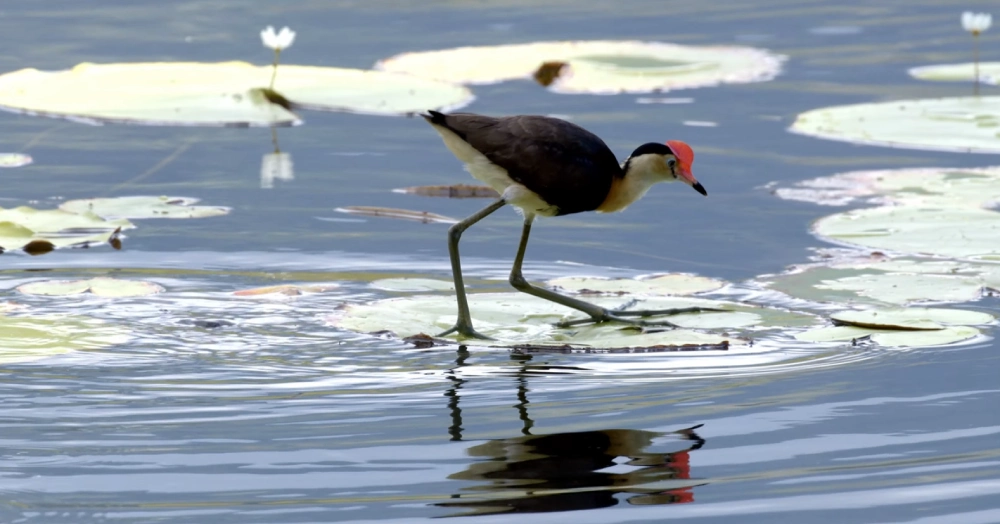
- Scientific Name: Irediparra gallinacea
- Habitat: Inhabits freshwater lakes, swamps, and ponds with floating vegetation.
- Behavior: Known as the “Jesus bird” for its ability to walk on water, thanks to its long toes.
- Physical Characteristics: Small wader with a red comb on its forehead, long legs, and large feet for walking on lily pads.
- Wingspan: 40-50 cm.
- Length: 22-27 cm.
- Mass: 100-140 g.
- Reproduction: Builds floating nests; lays 4 brown, speckled eggs.
- Diet: Insects, small fish, and seeds found on floating vegetation.
- Lifespan: 5-7 years.
13) Dusky Moorhen
A dark waterbird with a red bill and shield. Often seen foraging in wetlands and along riverbanks.
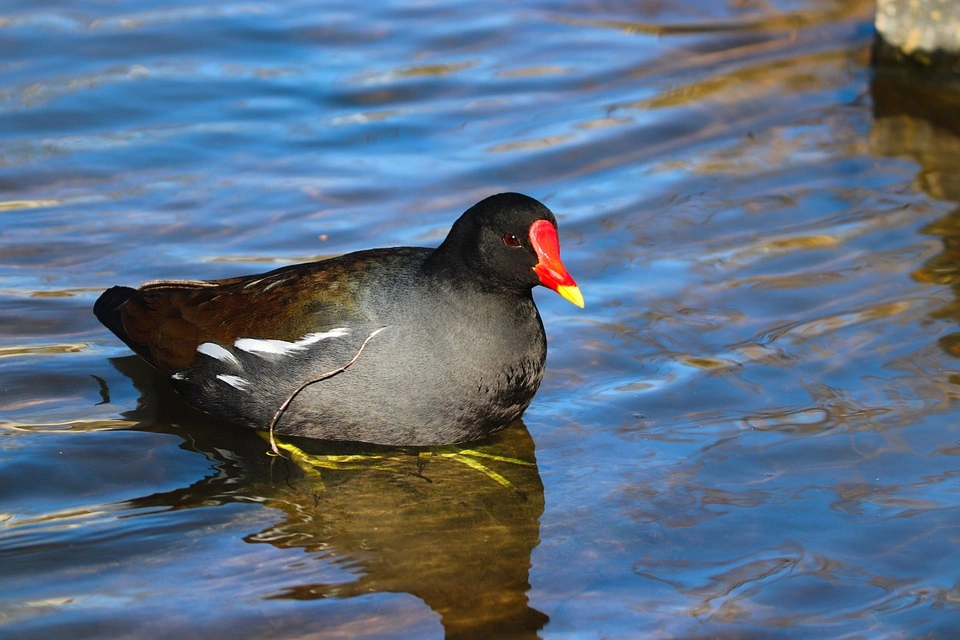
- Scientific Name: Gallinula tenebrosa
- Habitat: Prefers freshwater wetlands, lakes, and slow-moving rivers with ample vegetation.
- Behavior: Forages both in water and on land; often seen in groups.
- Physical Characteristics: Dark grey to black plumage with a red frontal shield and yellow-tipped bill.
- Wingspan: 50-60 cm.
- Length: 35-40 cm.
- Mass: 500-700 g.
- Reproduction: Nests in dense reeds; lays 5-10 cream-colored eggs with reddish spots.
- Diet: Aquatic plants, small insects, and seeds.
- Lifespan: 5-6 years.
14) Eurasian Coot
A black waterbird with a white face shield and red eyes, frequently diving for food in lakes and ponds.
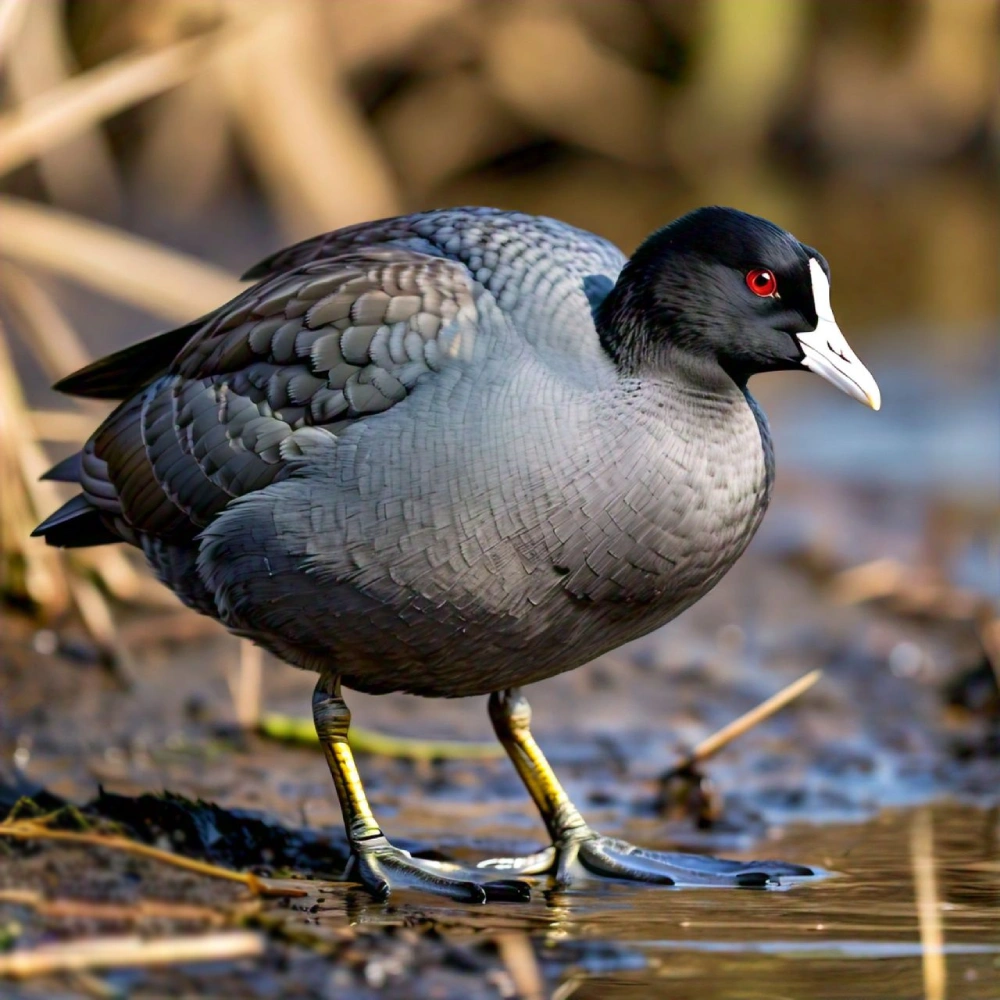
- Scientific Name: Fulica atra
- Habitat: Lakes, ponds, reservoirs, and rivers with vegetation.
- Behavior: Aggressive; often seen diving for food or fighting for territory.
- Physical Characteristics: Black body with a distinctive white frontal shield and red eyes.
- Wingspan: 70-80 cm.
- Length: 36-42 cm.
- Mass: 600-900 g.
- Reproduction: Nests among dense aquatic vegetation; lays 6-10 grey-speckled eggs.
- Diet: Aquatic plants, insects, and small fish.
- Lifespan: 8-10 years.
15) Glossy Ibis
A slender wader with iridescent brownish-green plumage and a long, down-curved bill. Common in marshes and wetlands.
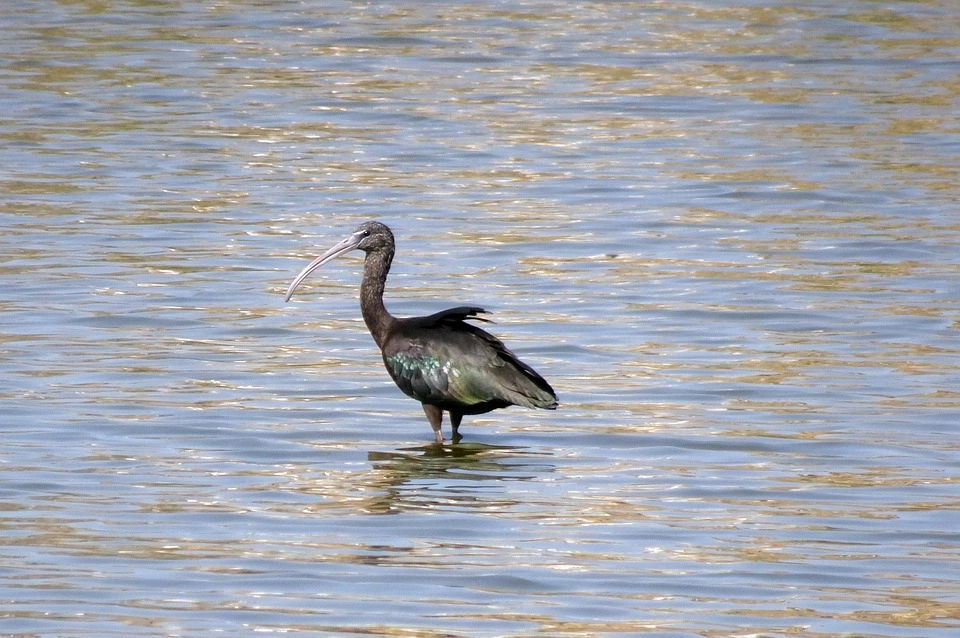
- Scientific Name: Plegadis falcinellus
- Habitat: Freshwater marshes, swamps, and estuaries.
- Behavior: Often seen probing the mud with its curved bill; migratory in some regions.
- Physical Characteristics: Slim, long-legged wader with dark brown to iridescent greenish plumage.
- Wingspan: 90-105 cm.
- Length: 55-65 cm.
- Mass: 600-800 g.
- Reproduction: Builds platform nests in colonies; lays 3-4 bluish-green eggs.
- Diet: Insects, crustaceans, and small fish.
- Lifespan: 10-15 years.
16) Great Egret
A tall, elegant white heron with a long yellow bill. Known for its graceful stalking behavior in shallow waters.
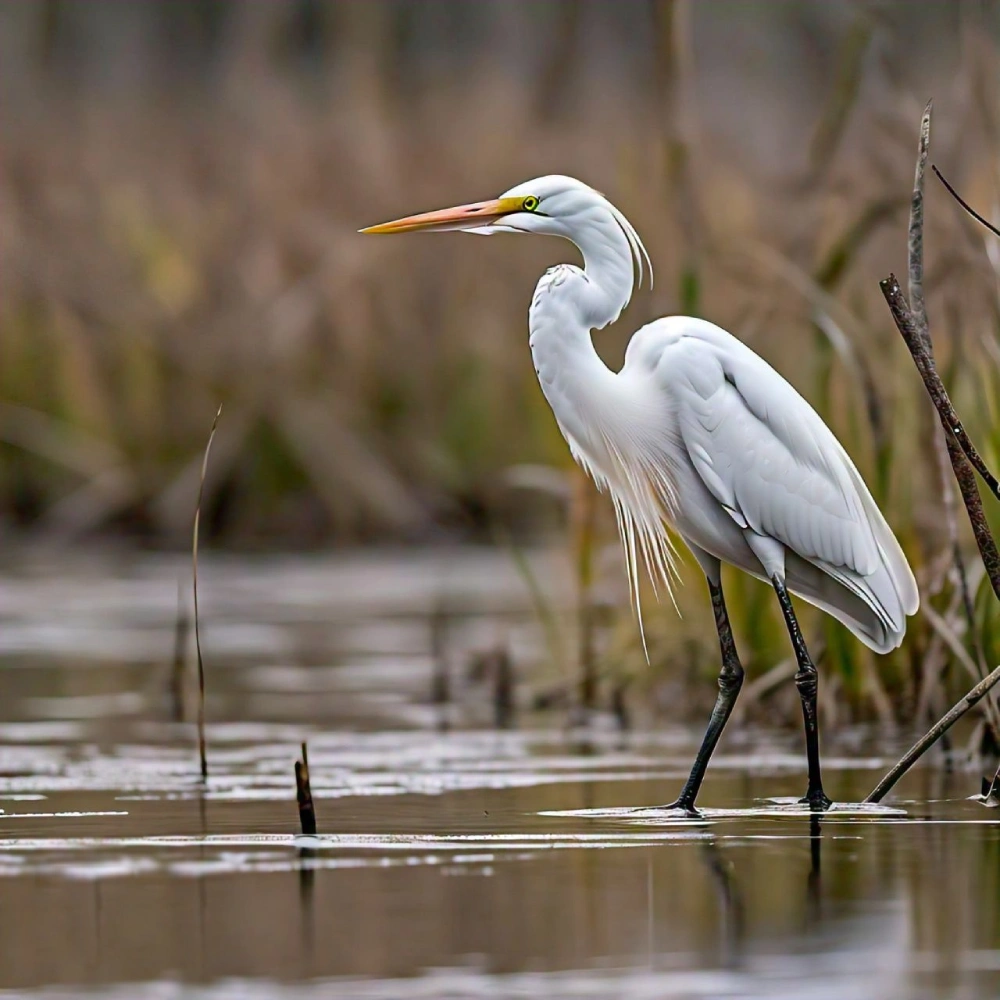
- Scientific Name: Ardea alba
- Habitat: Freshwater and saltwater wetlands, marshes, and coastal areas.
- Behavior: Stalks prey in shallow water; known for its graceful hunting stance.
- Physical Characteristics: Large white heron with a long neck, yellow bill, and black legs.
- Wingspan: 130-170 cm.
- Length: 85-105 cm.
- Mass: 800-1,200 g.
- Reproduction: Nests in trees or shrubs near water; lays 3-5 blue-green eggs.
- Diet: Fish, frogs, and insects.
- Lifespan: 15-20 years.
17) Grebes
Diving waterbirds with pointed bills and lobed feet. Known for their excellent swimming and diving skills.
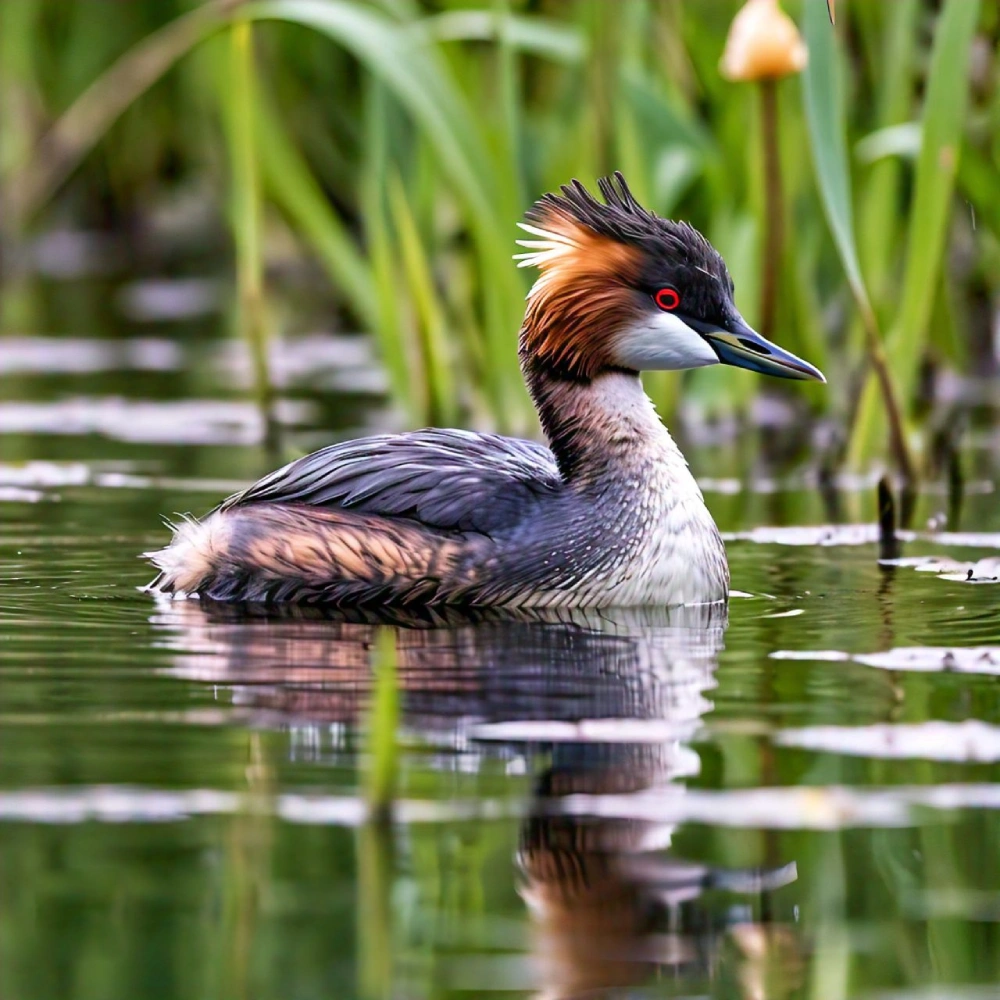
- Scientific Name: Various species (e.g., Podiceps cristatus – Great Crested Grebe)
- Habitat: Lakes, reservoirs, and slow rivers with open water.
- Behavior: Excellent divers; can stay underwater for long periods to catch prey.
- Physical Characteristics: Medium-sized water bird with slender necks and pointed bills; plumage varies by species.
- Wingspan: 59-85 cm (depending on species).
- Length: 23-51 cm (depending on species).
- Mass: 250-1,200 g (depending on species).
- Reproduction: Builds floating nests anchored to vegetation; lays 2-6 eggs.
- Diet: Fish, aquatic insects, and crustaceans.
- Lifespan: 10-15 years.
18) Purple Swamphen
A large, vibrant bird with deep blue plumage and a red bill. Often seen walking on floating vegetation.
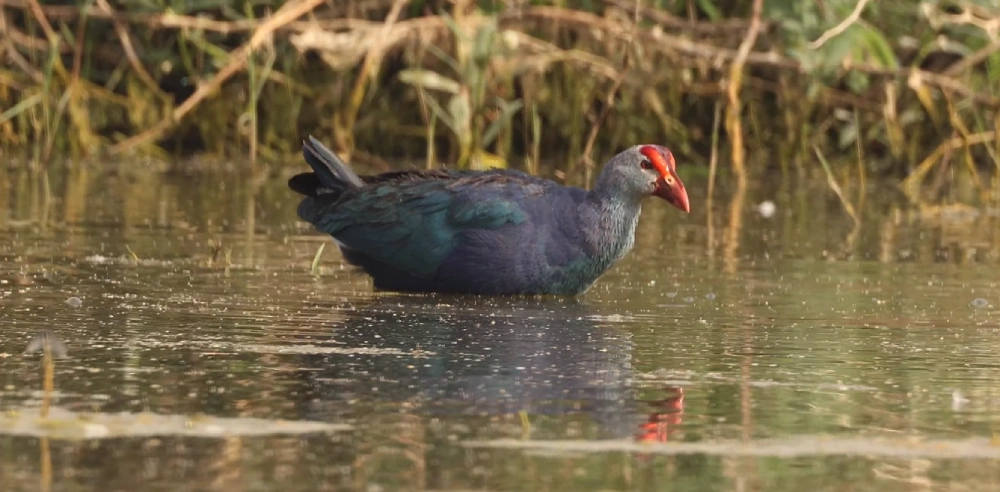
- Scientific Name: Porphyrio porphyrio
- Habitat: Freshwater wetlands, swamps, and reed beds.
- Behavior: Walks on floating vegetation; aggressive and territorial.
- Physical Characteristics: Large bird with deep blue-purple plumage, red bill, and legs.
- Wingspan: 90-100 cm.
- Length: 45-50 cm.
- Mass: 700-1,000 g.
- Reproduction: Nests in reeds; lays 3-7 pale brown eggs with dark spots.
- Diet: Grasses, reeds, and small invertebrates.
- Lifespan: 7-9 years.
19) Royal Spoonbill
A white wading bird with a spoon-shaped bill, is often seen sweeping it side to side in shallow water for food.
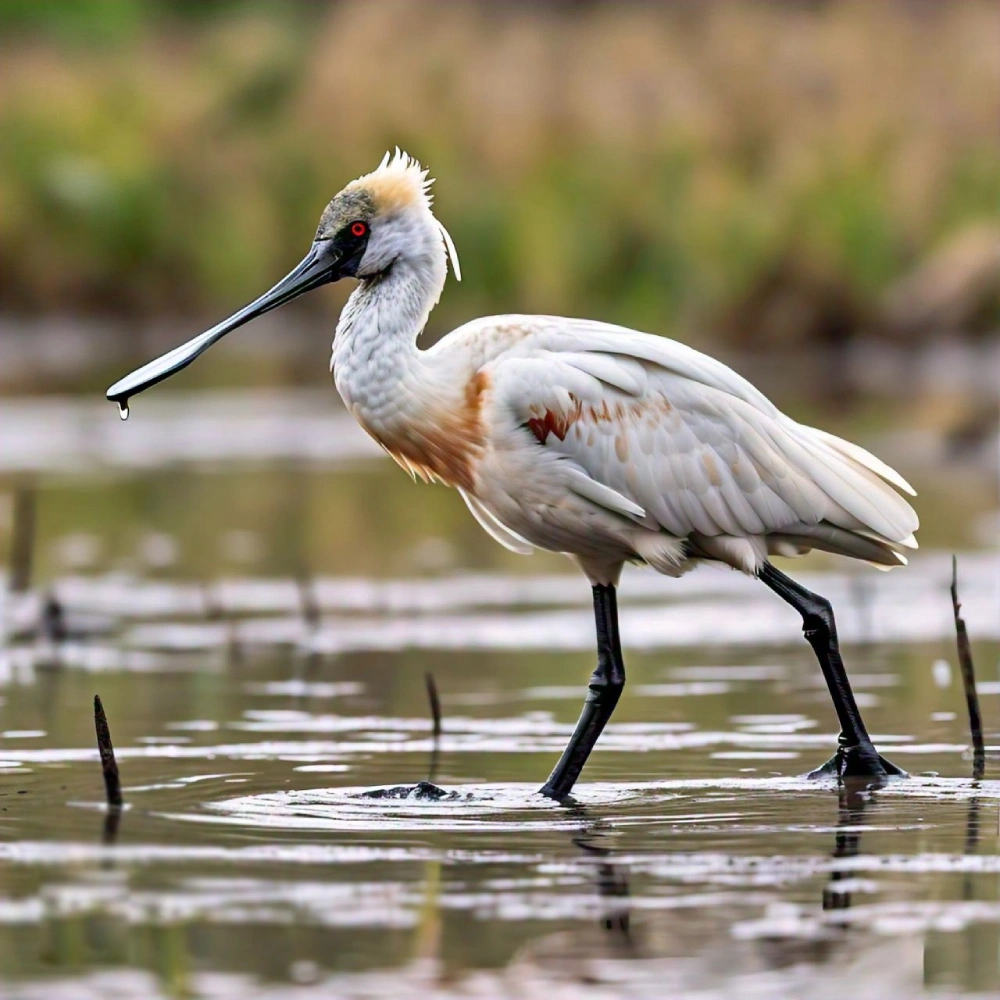
- Scientific Name: Platalea regia
- Habitat: Wetlands, estuaries, and shallow coastal waters.
- Behavior: Sweeps its bill side to side in shallow water to catch prey.
- Physical Characteristics: Large white bird with a distinctive spoon-shaped bill; breeding adults have a crest of white feathers.
- Wingspan: 115-135 cm.
- Length: 70-80 cm.
- Mass: 1.5-2.5 kg.
- Reproduction: Nests in trees or reed beds; lays 2-4 chalky white eggs.
- Diet: Fish, crustaceans, and aquatic insects.
- Lifespan: 10-12 years.
Conclusion
Water birds form an integral part of Australia’s natural heritage with a contributory effect on the health and stability of aquatic ecosystems. A good understanding of these species can lead to an appreciation of their role and the need to consolidate conservation efforts aimed at preventing any form of habitat degradation due to habitat loss, pollution, and climate change.
By saving wetlands, rivers, lakes, and coastal systems, we secure the survival of these wondrous creatures while preserving Australia’s fragile ecology. It is up to individuals to work for their conservation and spread awareness relating to these spectacular water birds.

